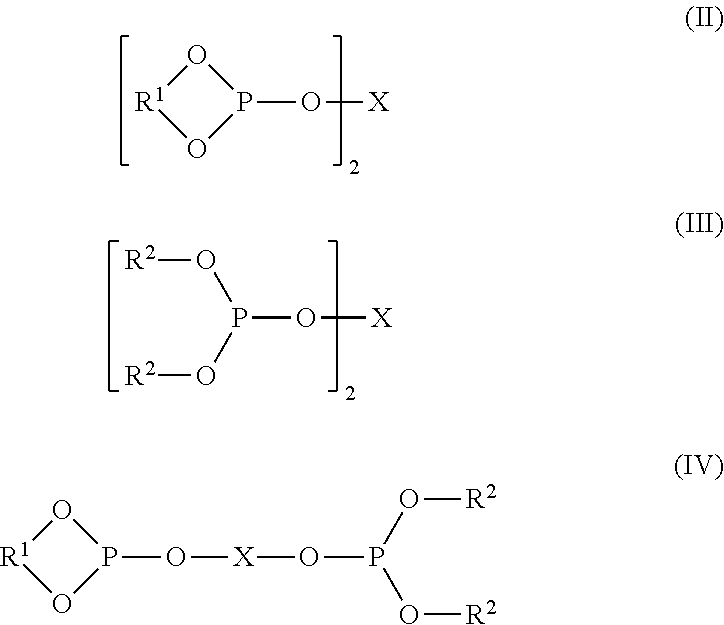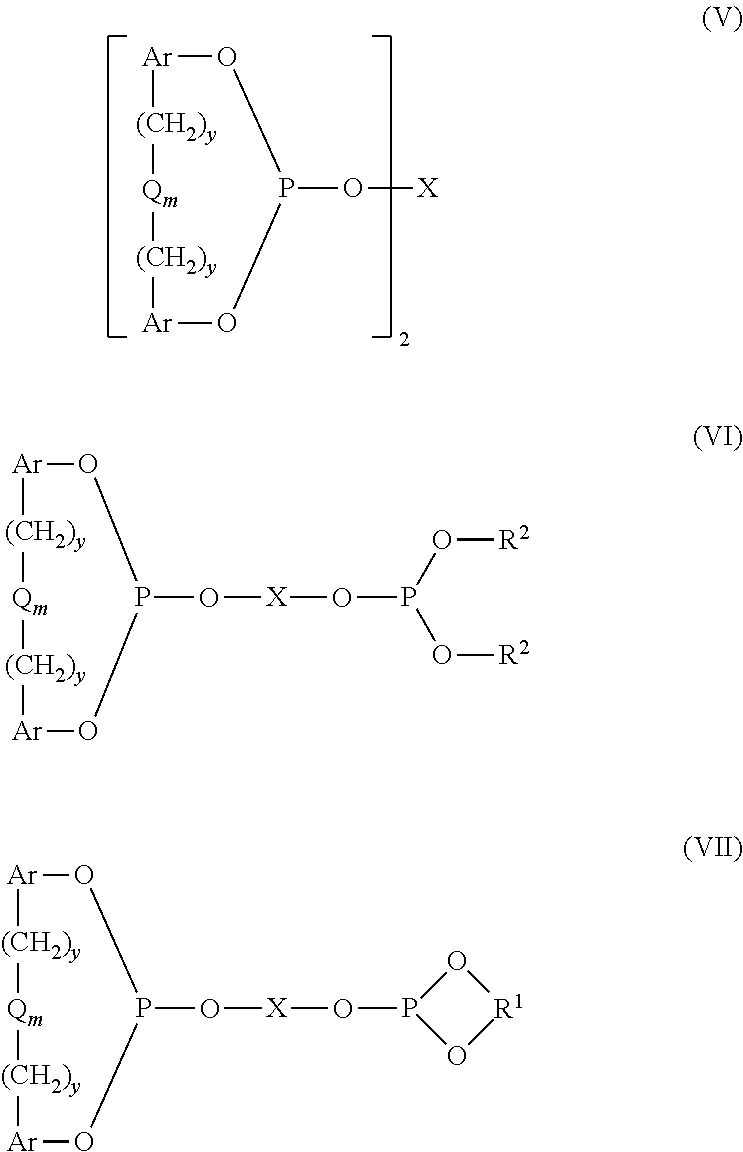Controlling the Normal:ISO Aldehyde Ratio in a Mixed Ligand Hydroformylation Process
a hydroformylation process and iso aldehyde technology, applied in the direction of organic chemistry, chemistry apparatus and processes, carbonyl compound preparation, etc., can solve the problem of increasing the cost of the process, and achieve the effect of reducing the concentration of transition metal in the first reaction zon
- Summary
- Abstract
- Description
- Claims
- Application Information
AI Technical Summary
Benefits of technology
Problems solved by technology
Method used
Image
Examples
specific embodiments
General Procedure for Hydroformylation Process
[0053]The hydroformylation process is conducted in a glass pressure reactor operating in a continuous mode. The reactor consists of a three ounce pressure bottle partially submersed in an oil bath with a glass front for viewing. After purging the system with nitrogen, about 20-30 milliliters (mL), preferably 20 mL, of a freshly prepared rhodium catalyst precursor solution is charged to the reactor with a syringe. The catalyst precursor solution contains 50-200 ppm rhodium, preferably 100 ppm, (introduced as rhodium dicarbonyl acetylacetonate), Ligand 1, and tetraglyme as solvent. After sealing the reactor, the system is purged with nitrogen and the oil bath is heated to furnish the desired hydroformylation reaction temperature, preferably 80° C. The catalyst solution is activated with a feed of 1:1 CO and H2 at a total operating pressure of 150 to 160 psig (1034 to 1103 kPa) for 30 to 60 minutes, and at a temperature ranging from 50 to 1...
example 1
Butyraldehyde with a N:I Ratio Less than 10
[0055]Catalyst solution is prepared and charged to the glass reactor system. Conditions are established as described below:
Ligand 1 (wt %)0.47Rhodium (ppm)75Hydrogen (psig)42CO (psig)42Propylene (psig)4Temperature (° C.)75Total Pressure (psig)150
[0056]After several days of hydroformylation with Rh / Ligand 1, small portions of Ligand 2 are added from a toluene stock solution. Because small amounts of ligand are often decomposed by oxygen, water and other contaminants in the system, the ligand is added slowly while monitoring the N / I ratio. An average of 0.12 equivalents per day of Ligand 2 per rhodium is added over 10 days, over which time the aldehyde N:I ratio is about 2. The subsequent addition of an aliquot of Ligand 2 (0.14 equivalents per rhodium) results in an increase of the aldehyde N:I ratio to about 7.
example 2
Butyraldehyde with a N:I Ratio of 30
[0057]A catalyst solution is prepared and charged to the glass reactor system as described in Example 1. After several days of hydroformylation with Rh / Ligand 1, small portions of Ligand 2 are added from a toluene stock solution. An average of 0.27 equivalents per day of Ligand 2 per rhodium is added over three days, over which time the aldehyde N:I ratio is about 2. The subsequent addition of an aliquot of Ligand 2 (0.4 equivalents per rhodium) results in an increase in the aldehyde N:I ratio to about 32.
PUM
| Property | Measurement | Unit |
|---|---|---|
| temperature | aaaaa | aaaaa |
| temperature | aaaaa | aaaaa |
| molar ratio | aaaaa | aaaaa |
Abstract
Description
Claims
Application Information
 Login to View More
Login to View More - R&D
- Intellectual Property
- Life Sciences
- Materials
- Tech Scout
- Unparalleled Data Quality
- Higher Quality Content
- 60% Fewer Hallucinations
Browse by: Latest US Patents, China's latest patents, Technical Efficacy Thesaurus, Application Domain, Technology Topic, Popular Technical Reports.
© 2025 PatSnap. All rights reserved.Legal|Privacy policy|Modern Slavery Act Transparency Statement|Sitemap|About US| Contact US: help@patsnap.com



